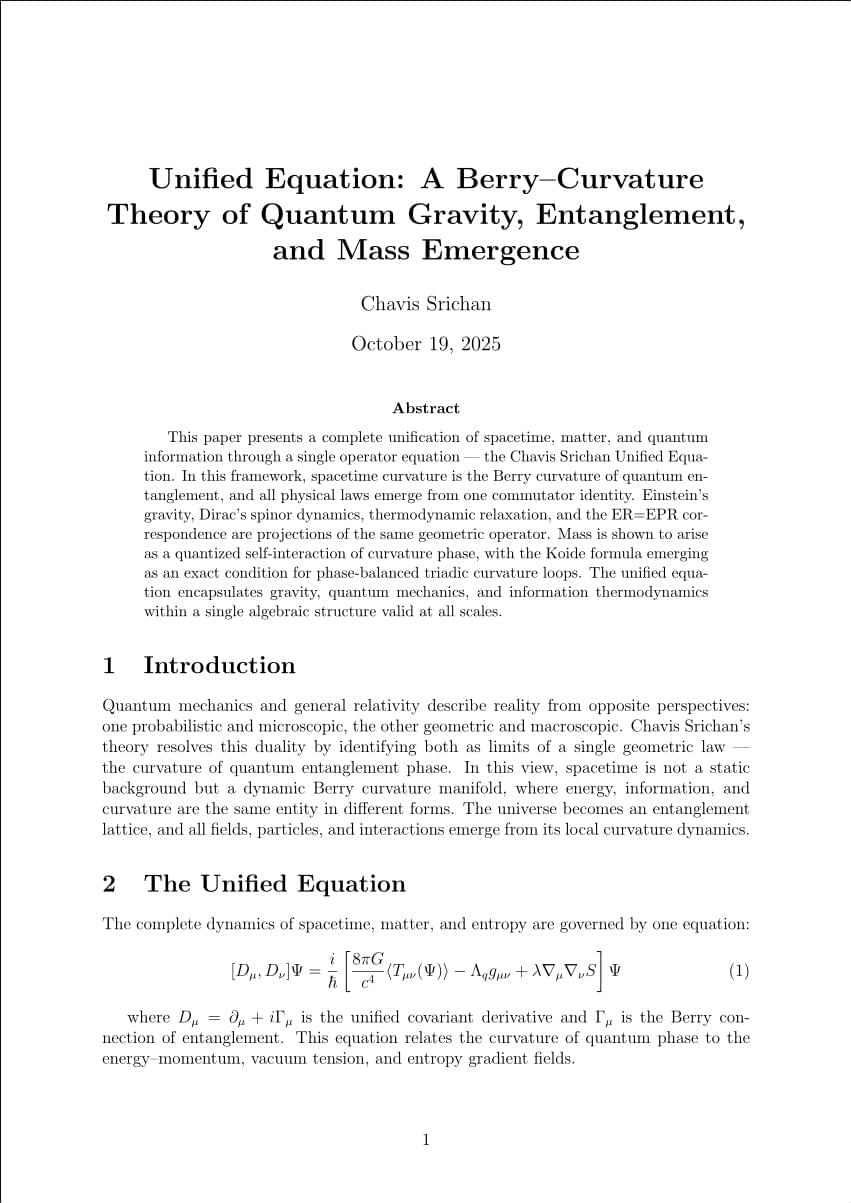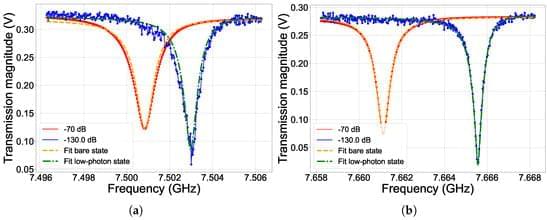Many Thanks to Sabine Hossenfelder for giving me puzzles.
What if everything — gravity, light, particles, and even the flow of time — came from a single equation? In Chavis Srichan’s Unified Theory, the universe isn’t built from matter, but from the curvature of entanglement — the twists and turns of quantum information itself. Space, energy, and even consciousness are simply different ways this curvature vibrates.
The One Equation.
At the smallest scale, every motion and interaction follows one rule:
[D_μ, D_ν]Ψ = (i/ħ) [(8πG/c⁴)⟨T_μν(Ψ)⟩ − Λ_q g_μν + λ ∇_μ∇_ν S]Ψ
It means that the “shape” of space itself bends in response to energy and information — and that same bending is quantum mechanics, gravity, and thermodynamics combined.
Mass: When Curvature Loops Back.









